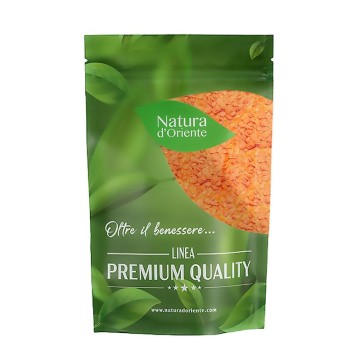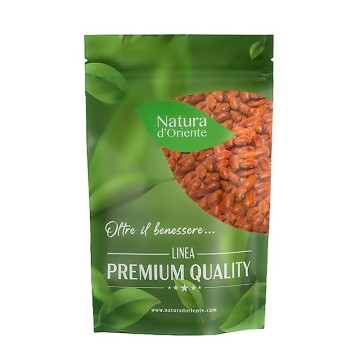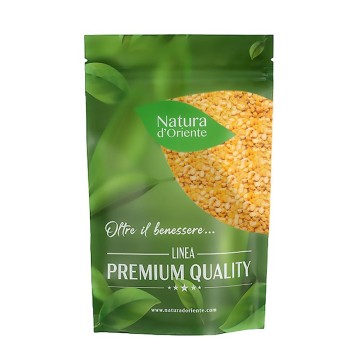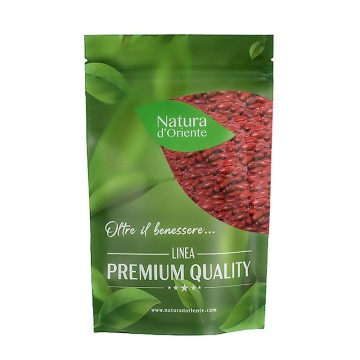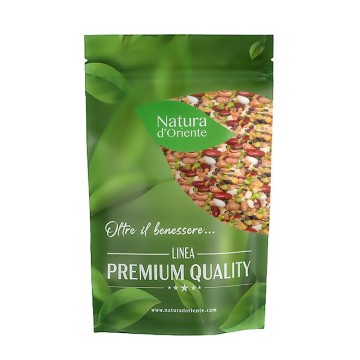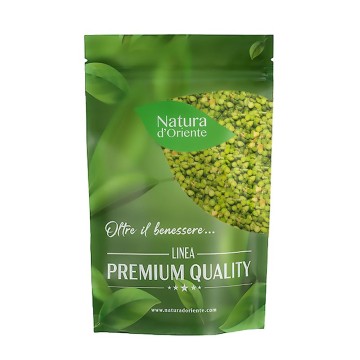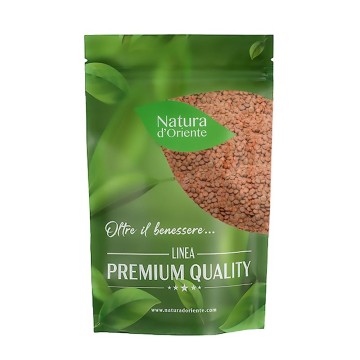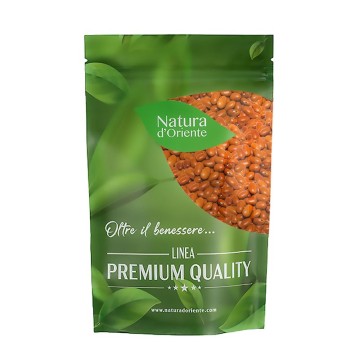Broad beans are green legumes, consumed for millennia all over the world for their slightly sweet and earthy flavor, and for their healthy virtues. They are full of vitamins, minerals, fibers and proteins, which they make available to our body.
Even in their peeled version, without the peel, they have excellent properties ...
Broad beans: properties and benefits
Due to their relatively small size, beans contain an incredible amount of nutrients. In particular, they are rich in vegetable proteins, folate and various other vitamins and minerals ; some studies have focused in recent decades on the benefits of other substances present in beans, useful for improving motor functions and immunity.
From a daily diet point of view, broad beans are a good source of soluble fiber, which can aid digestion and lower cholesterol levels.
Soluble fiber can bind to LDL cholesterol during digestion and contribute to its expulsion from the body.
From the point of view of intestinal transit, soluble fiber can improve them by absorbing water in the intestine, forming a gelatinous substance that softens the stool and counteracts constipation.
Eating beans regularly can also be useful in an anti-aging function, as they are rich in compounds capable of improving antioxidant activity. Antioxidants are essential for the defense of your body, as they fight free radicals that can lead to cell damage and diseases. From an antioxidant point of view, beans are a good source of vitamins A and C .
Eating broad beans, rich in iron, can help counteract the symptoms of anemia. Iron is needed to make hemoglobin, the protein that allows red blood cells to carry oxygen around the body. An iron deficiency can lead to anemia, characterized by fatigue, weakness, dizziness. To avoid it, it is good to regularly consume broad beans and other foods rich in iron and vitamin C, to increase the levels of this mineral in the blood.
Other minerals present in beans are magnesium and potassium, which can help relax the walls of the blood vessels and decrease high blood pressure. These are nutrients that can improve heart health.
The richness of manganese and copper are equally important in beans, as they are two nutrients that are beneficial for bone health.
A particular recent research has focused on the bio-availability that beans allow, for an important compound. Broad beans are rich in levodopa (L-dopa), which the body converts into the neurotransmitter dopamine. This process is being studied for possible help in combating the symptoms of Parkinson's disease - a disease in which the brain cells that produce dopamine are eliminated. These symptoms are usually treated with drugs that contain L-DOPA, so ongoing research hopes to be able to evaluate beans as a useful food to support the well-being of motor function compromised by the disease.
Broad beans are also an excellent source of folate, a nutrient that promotes proper development of the brain and spinal cord in children.
Origins and History of cultivation
The broad bean (Vicia faba) is a legume that comes from a plant widespread in temperate regions. The archaeological evidence we have suggests that it was one of the first foods grown by man.
It probably comes from the Mediterranean area, already cultivated by the Egyptians, and then used in ancient Greek cuisine.
In Greece, it seems that dried broad beans were used for voting, and a curiosity is given by the fact that Pythagoras forbade their consumption to his followers. The broad bean remained an important part of the Mediterranean diet throughout antiquity, and among the ancient Romans it was a much appreciated food as a substitute for meat, thanks to its proteins. In particular from the gens Fabia, which perhaps derived its name for its predilection for this legume.
It remained on the table during the Middle Ages, as it could be dried and stored for long periods. In the sixteenth century, slowly, it was replaced by the potato in the common diet.
These legumes gave their name to favism, a genetic condition that has been described since ancient timesto. It is caused by a deficiency of the enzyme glucose-6-phosphate dehydrogenase, which causes reactions in contact with bean products. Susceptible individuals immediately show haemolytic anemia. Worldwide it involves about 400 million people, mainly of Mediterranean, African and Middle Eastern origin.
Beyond the cases of favism, this legume is widely consumed for its benefits and savory taste. It was introduced to the Americas by Christopher Columbus, and now beans are also grown in tropical regions.
The world's largest producers of beans to date are Italy, China, Egypt, Ethiopia and Morocco.
Plant and Fruit
Like other varieties of beans, legumes and peas, broad beans derive from a plant that is part of the Fabaceae family, Vicia faba.
It is a different plant from other bean varieties, which can reach a height of 50-180 cm, depending on the variety. The plant is resistant, prefers cool temperatures, but is subject to the attack of many pests and diseases.
Most broad bean plants grow with a main stiff central stem, although some varieties produce multiple stems that divide from ground level. The flowers appear in spring and early summer, usually with white to black flecked petals, although some varieties produce red flowers. The flowers are partially self-pollinating, but the plant is more productive if insects pollinate it.
Once pollinated, the flowers produce bean pods over 20 cm long, each containing 3 to 10 large beans (up to 5 cm). The seeds can have colors from green to red, up to brown in some varieties.
The most common in human nutrition is Vicia faba var. major, with large pods and seeds. Other varieties are useful for enriching the soil with nitrogen, such as Vicia faba var. minor or for forage such as Vicia faba var. equine.
To get the best out of it, you usually grow the bean plant in the winter for the spring harvest, also because it can take a long time to harvest, from 16 to 18 weeks.
The beans can be harvested in two ways, depending on the culinary needs. You can collect the immature pods, when they are about 7.5 cm long, then cook them and eat them whole.
To eat shelled beans, it is advisable to leave them on the plant longer, until the pods are filled and the seeds are soft.
Nutritional values of beans
Like various legumes, broad beans make available nutrients useful for our body. On 100 grams of shelled broad beans, we find a caloric intake of 330 kcal, low fat (2%), many proteins (about 23%), carbohydrates and abundant fiber (about 25%).
Among the mineral salts are present in the hulled beans, we find moderate levels of calcium (about 100 mg / 100 g), iron (about 6 mg), potassium (about 900 mg ), phosphorus (about 400 mg) and magnesium (about 190 mg), as well as zinc, copper and manganese.
By consuming 100 grams of shelled broad beans, you assimilate: Vitamin C (about 1.4 mg), Vitamin A (about 50 IU), Vitamin K (about 9 mg), Vitamin B6 and good doses of folate - vitamin B9 (over 400 mcg) as well as riboflavin, niacin, choline and thiamine.
How to consume peeled broad beans in the kitchen
They are a versatile ingredient for many legume recipes, or to be enjoyed on their own as a snack (the combination of broad beans and pecorino is famous). The beans have a strong, earthy and slightly bitter flavor, which however is very popular in combination with cheeses and cereals.
They can sometimes be tough and tough when eaten, but this is usually due to the beans being overripe. It is good to know how to choose the right ones for your cooking needs.
Soft broad beans are excellent in spicy salads, both lightly cooked and raw. The more mature ones have an outer skin that becomes harder with time, and worsens with overcooking. For this reason, peeled broad beans are highly appreciated, as they allow faster cooking and better results.
The peeled broad beans can be steamed and sautéed in orolive oil to be eaten whole, mashed on bread or in other dishes.
When boiled and mashed, they form the basis of many classic Middle Eastern dishes, including falafel, hummus, some Egyptian dishes, or bean stews.
They can be excellent in soups, served blanched or lightly sautéed in butter as a side dish to meat, in soups, for creams and pates . Once upon a time, soups with broad beans were very popular, while recipes of meat sauce and vegetarian burgers and broad bean balls are becoming increasingly popular.
Like other legumes, the cooking times of the beans include a soaking phase, which in this case is reduced, of about 8 hours.
After soaking, the beans are soft and cooked in about 30 minutes, being shelled beans - without peel.
Recipe with Broad Beans: Bean Minestrone
Ingredients: 500 g of broad beans - 100 g of bacon fat - ½ onion - 2 stalks of celery - ½ carrot - 1 courgette - 2 potatoes medium - 100 gr of fettuccine - 100 gr of grated Parmesan cheese - oil and salt to taste
Preparation:
Boil the beans in a saucepan with plenty of water, and in the meantime cut the onion, celery stalks, carrot, courgettes and potatoes into cubes.
Put them in the water, along with the slice of bacon fat. Add the salt and cook until the beans have softened.
Then add the fettuccine and, once cooked, turn off the heat and let it cool for a couple of minutes. Serve on the table, covering the soup with plenty of grated Parmesan cheese
Hulled beans: side effects and contraindications
As we have mentioned, a serious side effect of these legumes is that of favism. Upon contact with bean products, susceptible individuals suffer from a severe reaction, and report symptoms of haemolytic anemia. Those affected by favism, therefore, must avoid contact or consumption of the beans.
Like other legumes, broad beans are not recommended for those suffering from certain intestinal diseases, as they can cause intestinal bloating, gas and flatulence, and digestive difficulties for those who are not used to eating legumes.
Thanks to the peeling, however, the peeled broad beans are more easily digestible, and annoying ailments such as meteorism (excessive accumulation of gas in the gastrointestinal tract) are avoided.









 No reward points for this product.
No reward points for this product.


